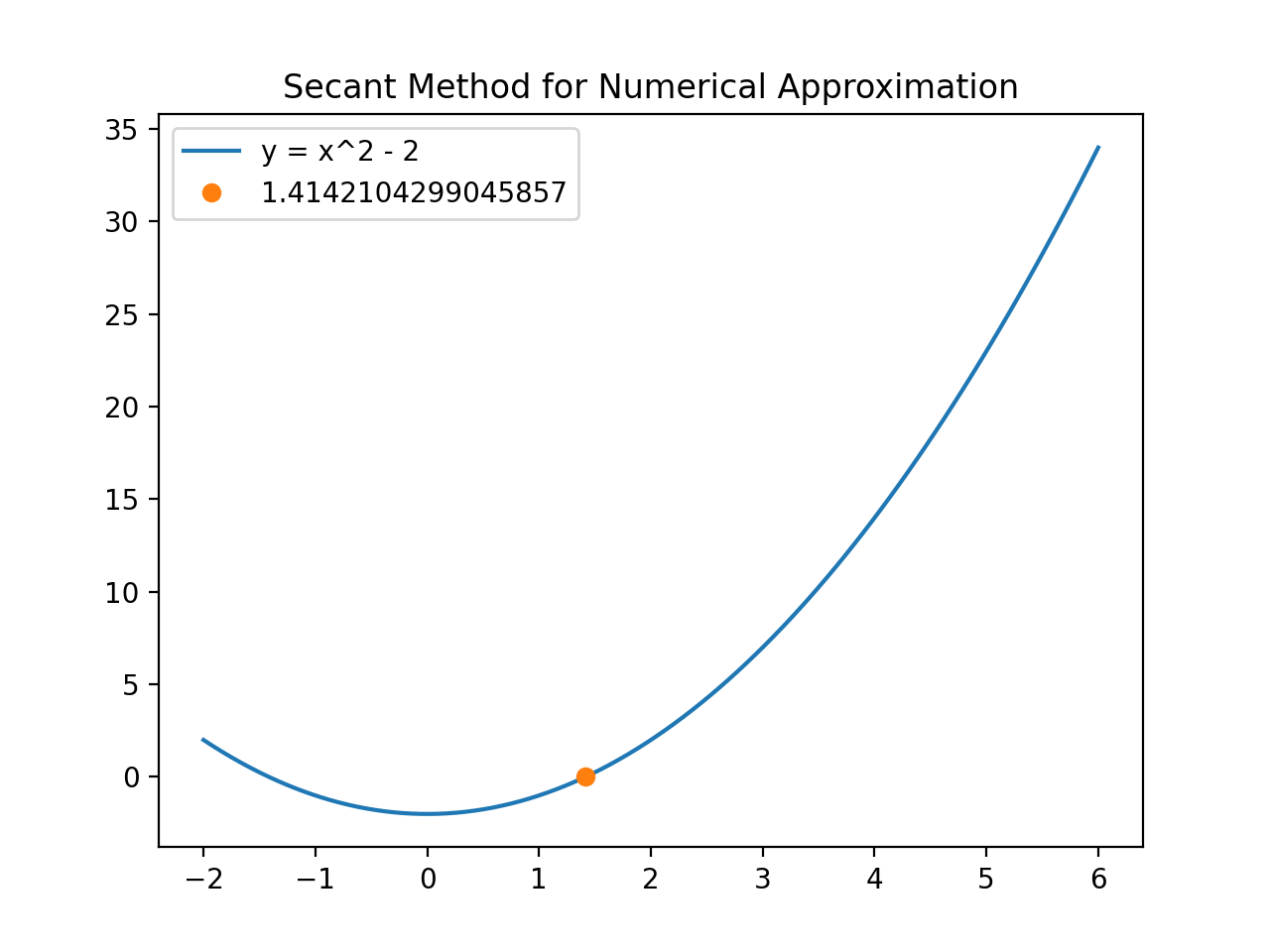Secant Method for Numerical Approximation.
If we recall from the Newton’s Method, the root was determined by the first order Taylor’s Series expansion.
\[F(x) = f(x_0) + f'(x_0) (x - x_0)\]
We can determine the root by determining the linear function which corresponds to a line that connects two points on the graph of the function \(f(x)\).
We know that if a line passing through two points say \((a_0, b_0)\) and \((a_1, b_1)\), the equation of that line is given by,
\[y = b_0 + \frac{b_{1} - b_{0}}{a_{1} - a_{0}} (x - a_{0})\]
So, let us consider \((a_0, f(a_0))\) and \((a_1, f(a_1))\), be two points on the graph of \(f(x)\)
\(y = F(x)\)
\(y = f(a_0) + \frac{a_{1} - a_{0}}{a_{1} - a_{0}} (x - a_{0})\)
Now the function $f(x)$ has a zero value at \(a_2\) then,
\[0 = f(a_0) + \frac{a_{1} - a_{0}}{a_{1} - a_{0}} (a_2 - a_{0})\]
\[a_2 = a_0 - f(a_0) \frac{a_1 - a_0}{f(a_1) - f(a_0)}\]
We can also interpret the above equation for more iteration in the form of,
\[a_{n+1} = a_n - f(a_n) \frac{a_n - a_{n - 1}}{f(a_n) - f(a_{n - 1})}\]
The advantage of secant method is the rate of convergence is faster relative to the bisection method.
This method utilizes two recent approximations of the root to compute a new approximation, rather than using only the approximation that is bounded by the interval to enclose the respective root. The only setback of Secant method is we can always have a convergence.
Code
# Secant Method for Numerical Approximation
# Date: 07/7/2023
import numpy as np
import sympy as smp
import matplotlib.pyplot as plt
from sympy import *
from math import *
func = lambda x : x**2 -2
init_guess_1 = 1
init_guess_2 = 2
error = 0.00001
step = 1
condition = True
while condition:
if func(init_guess_1) == func(init_guess_2):
print("Error")
break
init_guess_3 = init_guess_1 - ((init_guess_2 - init_guess_1)*func(init_guess_1))/ (func(init_guess_2 - func(init_guess_1)))
init_guess_1 = init_guess_2
init_guess_2 = init_guess_3
step = step + 1
if step > 1000:
print("Not convergent")
break
condition = abs(func(init_guess_3)) > error
print(init_guess_3)
xvals = np.linspace(-2, 6, num=100)
yvals = func(xvals)
plt.plot(xvals,yvals, label = "y = x^2 - 2")
plt.plot(float(init_guess_3), float(func(init_guess_3)), "o", label = float(init_guess_3))
plt.title("Secant Method for Numerical Approximation")
plt.legend()
plt.show()
Ouput

Thank you for reading.